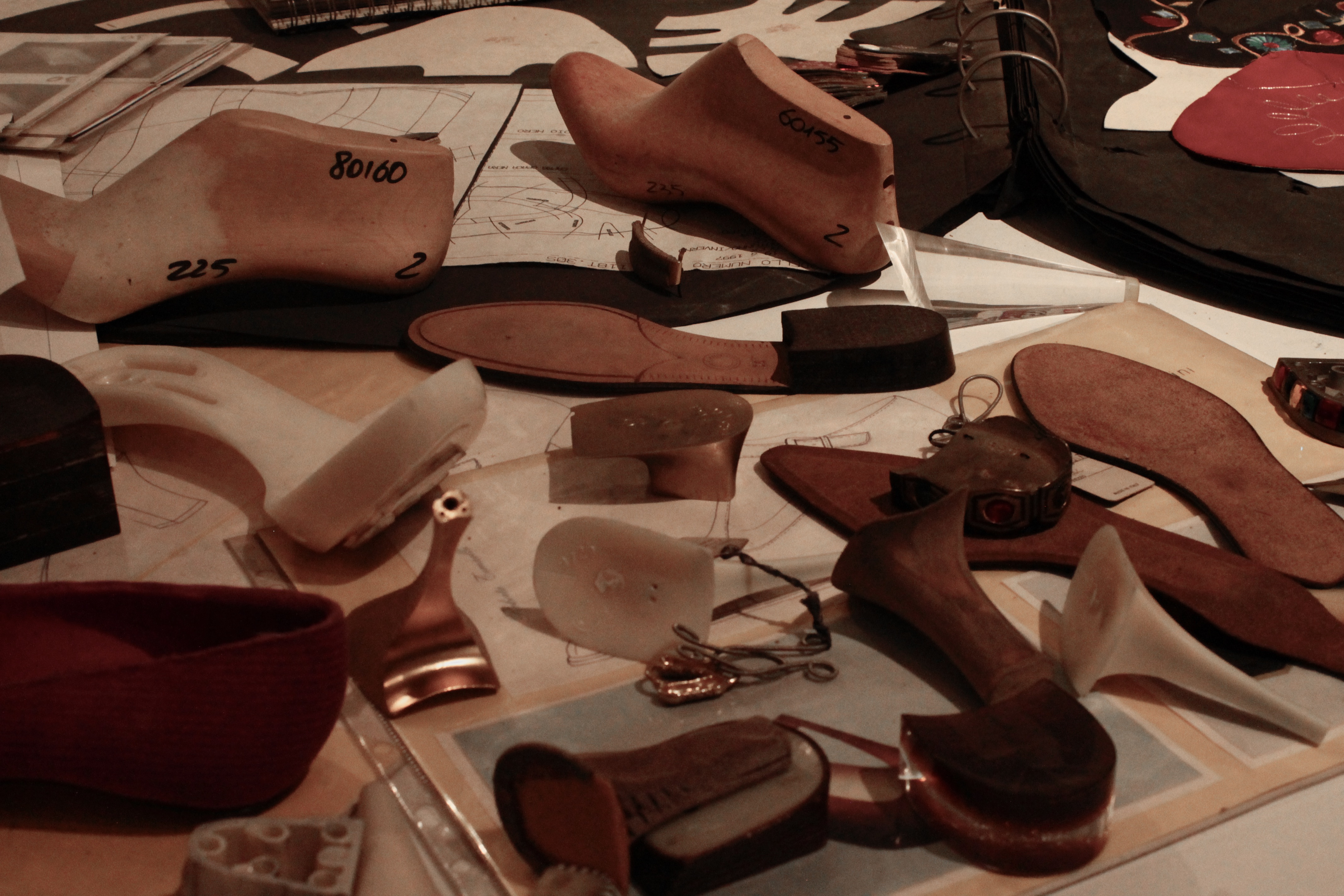Venice, 2nd January 2023 - Every shoe has a story to tell. A shoe it is not just an accessory to wear, it carries a wealth of curiosity and anecdotes that make it a real work of art. There are the colors of Pucci that were put for the first time in palette photographing the shades of the sea of Capri, its lemons and its bougainvillea, there are the wooden inlays of Christian Dior who had ambitions as an architect and was inspired by the world of furniture. There is the boule jewel heel with rhinestones made for the first time for the German actress and singer Marlene Dietrich. And yet, the shoe “pilgrim”, with oversize buckle inspired by the footwear of the pilgrim fathers and worn by Catherine Deneuve in the movie “Beautiful day” that became the most reproduced shoe in the world and absolute icon of the model maker Roger Viver. Or the anecdote of how it was born from a sketch of Karl Lagerfeld the logo of the fashion house Fendi, the famous FF inspired by the desire to revitalize fur: from here Fun Fur, with double F as the surname of the Fendi sisters. And then there is Yves Saint Laurent who made a social revolution by taking possession of the elements of the male wardrobe such as the Saharan, the trench coat, the tuxedo, the pantsuit and, above all, the boot, which was the prerogative of men and women of ill-repute, giving it to women in a time of struggles for women’s emancipation.
The 17th century Villa Foscarini Rossi, which next to Villa Pisani stands on the banks of the Brenta River, for almost thirty years has been housing the “Shoe Museum” built by Luigino Rossi, footwear entrepreneur. It was opened in 1993 to testify, through the designer footwear, the evolution of the history of costume from the second half of the 20th century. An architectural complex that leaves you breathless for its frescoes and its majesty and that the shoe entrepreneur, now 86, wanted to dedicate to the history of Rossimoda - its brand - and the entire shoe district of the Riviera.
Women’s Paradise, showcases 1350 iconic pieces, real pieces of wearable art made in over 60 years of collaboration with the largest fashion houses on the international scene.
“The museum opened in 1993 thanks to the intuition of Luigino Rossi, entrepreneur of the shoe factory founded by his father Narciso in 1947, who decided to create this good living room where to witness his successes – says Federica Rossi, museum curator – the museum tells the evolution of the costume through this accessory, collecting shoes divided by brands and showing the contribution of each designer to the evolution of fashion in a certain period of time that corresponds to the years of collaboration with the manufacture”.
The buildings, acquired in 2003 by the financial group of luxury LVMH, now welcome about 6,000 visitors every year. Locals but also shoe enthusiasts comes to discover the word of Rossimoda while in the adjacent Foresteria educational workshops, exhibitions, events and conferences are held.
Women’s shoes are displayed following a specific geographical criterion: on the ground floor the Anglo-Saxons with the American, English and German fashion houses while on the first floor, the Mediterranean with the French, Italians and Spaniards.
“This is because footwear is an accessory that must balance aesthetic needs with functional ones and we found out that the geographical origin of fashion houses, favors practical aspects rather than aesthetic. So, on the ground floor there is a more pragmatic atmosphere that fails on the first floor”, continues Federica Rossi.
On the ground floor there is also a selection of antique footwear from different continents, which Luigino purchased during his travels around the world, witnessing the evolution of an accessory that was designed for practical needs and now has become a way to communicate and a symbol of a social belonging. There are the shoes of the Indians decorated with beads that indicate the tribe of origin and the role within that tribe, the wooden clogs, the disturbing shoes of Chinese women with bandaged feet only 13 cm long, an old Central American sandal of straw woven with a protective function, a ”heel” used by a Venetian noblewoman, or birch shoes woven in use in the cold countries of Finland and Russia that allowed walking on ice.
And if everything starts from Venice with the school of calegheri - whose existence was first documented in 1268 - the Riviera has become one of the most famous footwear districts in the world for the quality of its products, the professionalism of workers and aesthetic taste.
“This territory is characterized by two fruits: the civilization of the Venetian villas and the footwear district – concludes the curator – these characteristics influenced the product that comes out of here. We are surrounded by a certain type of architecture that has certain proportions, a certain kind of taste and a certain sense of harmony that shape an archetype in the things we do. We believe that everything that surround us has influenced the refined production of this territory”.

